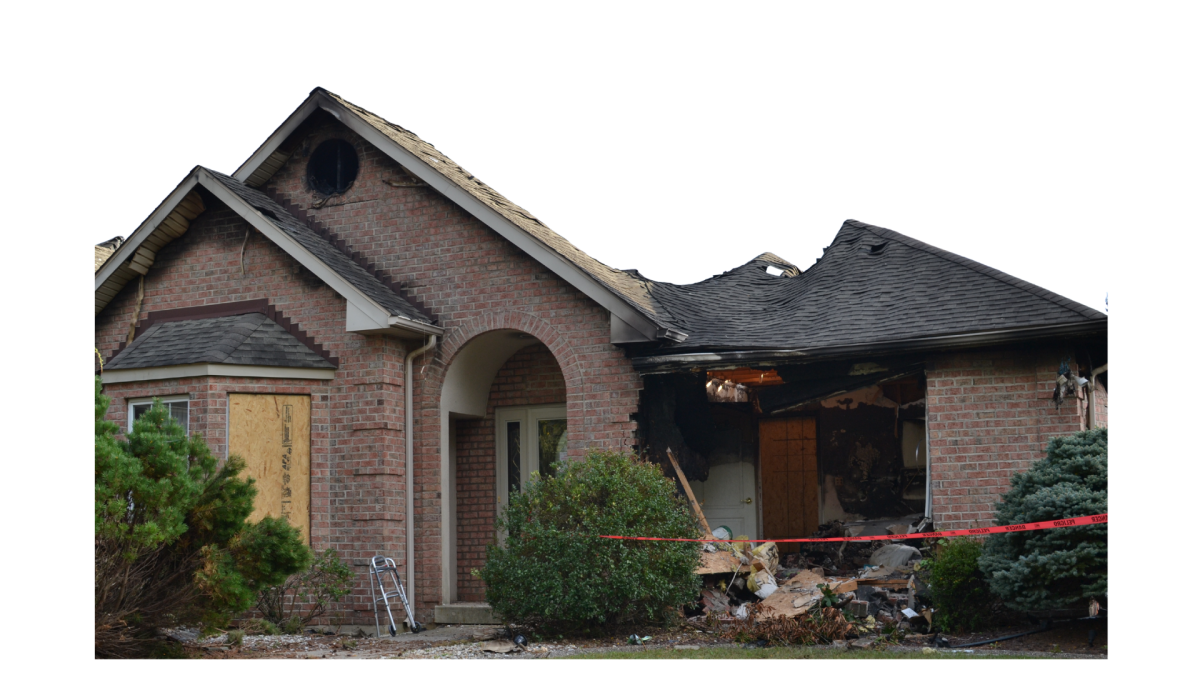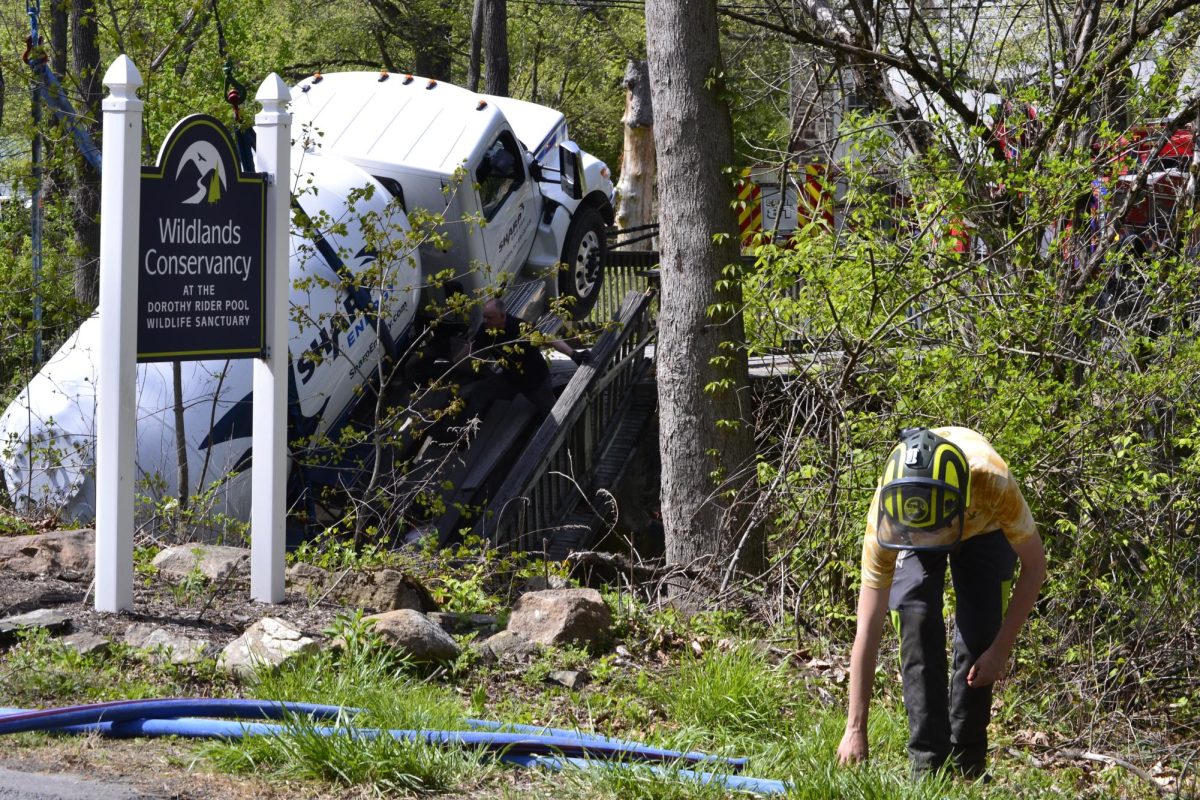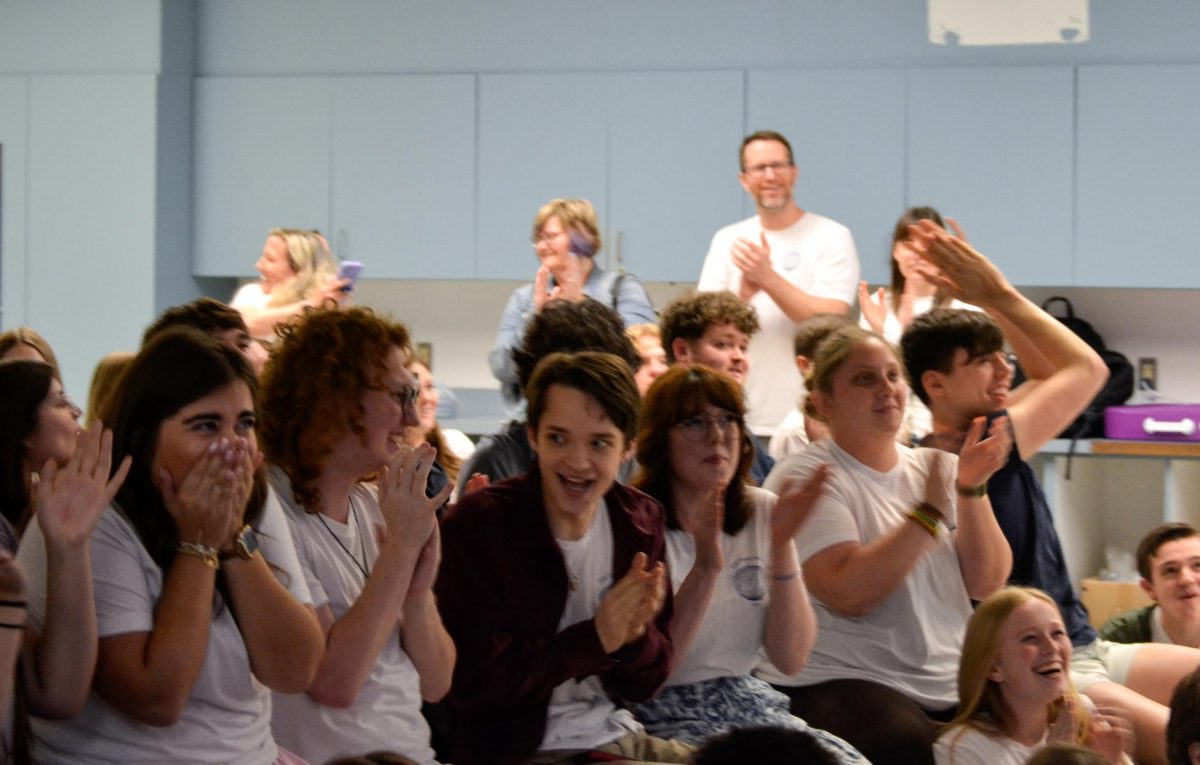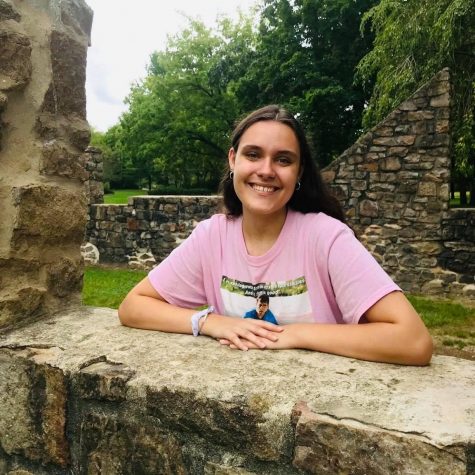The world’s access to weather forecasting has gone through drastic changes since the development of modern meteorology in the 1800s—from newspapers, to televisions, to phones, and now right to Emmaus High School’s own backyard.
Last year, the EHS Meteorology Club suggested the idea to install a live weather station on the roof of the building. The station, which was officially up and running on Oct. 24, records the real-time weather conditions around the school. It collects a wide range of data 24/7, including, but not limited to, wind speed and direction, atmospheric pressure, temperature, and rainfall. The company RainWise Inc., which, according to Meteorology Club advisor and science teacher Zachary LaBar, are “reputable” and “known for the quality of their equipment,” developed and built the solar-run machine.
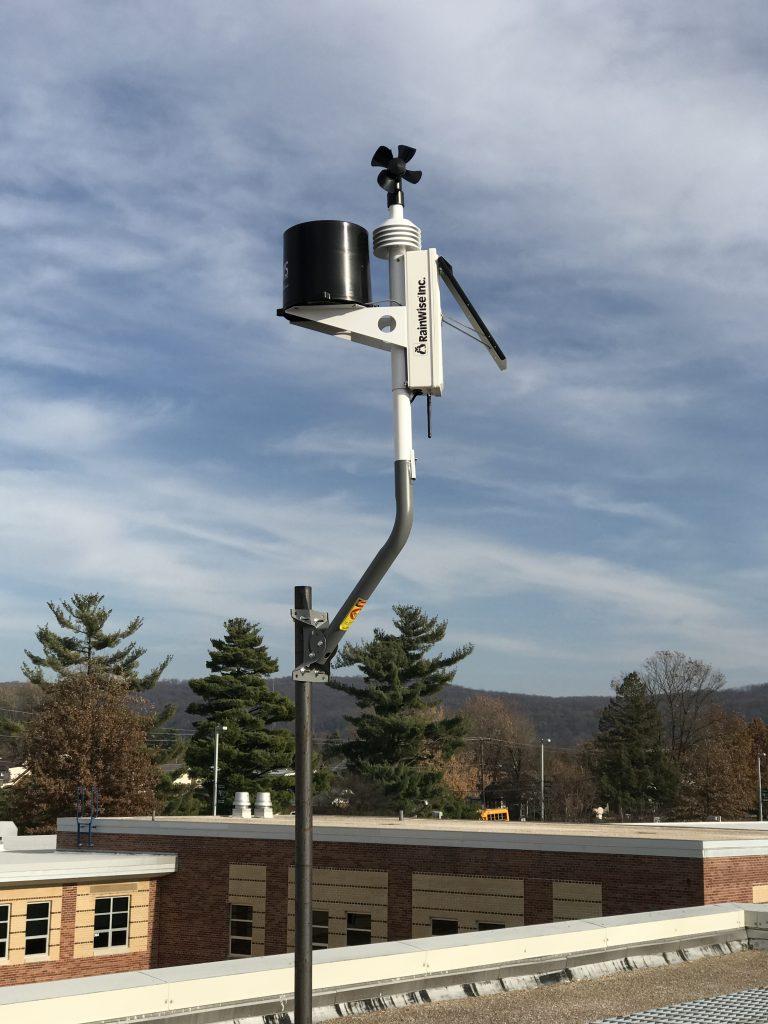
LaBar was the original advocate for the idea. Most of the data the club was analyzing came from the weather station at the Lehigh Valley International Airport, so he hoped that with an EHS station they could bring live data to the school for the club to use.
“We’ll take a look at, do the real-time conditions at our building match what the models are forecasting, and then we can kind of adjust what we think is gonna happen based on how close they are to what’s actually occurring right outside,” LaBar said.
During their research process into the plausibility of installing a station, the club discovered that the school already had a weather station installed, but that it hadn’t been in use for years. They requested a new model from principal Dr. Kate Kieres that would allow them to share the data with everyone in the building through the Weather Underground app and the RainWise website. The Meteorology Club also helped develop the media packages they released within the school community and planned where the school would install the machine.
One of the largest motivators for the school to install the station was its potential cross-curricular applications. Due to its potential use in science classes, the administration allocated a certain amount of building funds to the science department for the project.
LaBar believes this new access to the live data helps to stress the real-world applications of the concepts students are learning in class.
“One of the main things we were trying to promote is taking real-world data and applying that to what we do in the classrooms,” LaBar said. “Meteorology is happening around us all the time and the power of our own data really helps drive home [that] if we take physical measurements as part of the class, the students can compare the physical measurements to actually what’s being collected by our own weather station.”
Rachel Baxter, a science teacher and advisor for the Meteorology Club, has already used the weather station to aid her curriculum and make student-collected data more applicable.
“In class, the kids used handheld instruments to measure humidity the other day, and then they can check and see real-time what’s the humidity on the roof,” Baxter said. “So it was neat, they were excited to see the difference in their collected measurements with other instruments we have in the classroom and then using [the weather station].”
The sensors within the station are what measure the different weather components. RainWise Inc. hand calibrated each individual sensor, and they all work a little differently to pick up their particular data set. Almost every piece of the station works electronically, other than the rain gauge, which is a physical element. To measure rainfall, a small lever attached to the machine tips over every time it collects a certain amount of rain; the station then counts how many times the lever tips over.
Meteorology Club president junior Alex Schaaf hopes that the weather station and its data is not only useful to the students within EHS, but also the greater Emmaus area.
“It’s not only the club, but it’s the community, too,” Schaaf said. “Because anybody in the community [can use it] as long as they have the Weather Underground app—or they can find it on the RainWise website—so the community can use it [and] we can use it.”
The club is developing plans to work with ETV and WFMZ in the future on their weather forecasts, including a potential patent for a webcam that could feature live shots of the horizon from the school roof. They are also in the planning stage for their Weather Center program, which features presentations from both local meteorologists and ones from outside the Lehigh Valley.
In the long run, the club hopes to analyze data from the station that will ultimately show changes in temperature, weather, and other climate trends over the span of years.
“It actually does a great job with making graphs and all sorts of temperature anomalies,” Schaaf said. “…It gives us great data so then actually over many years we can see how the temperature has changed and the averages [have] change[d].”


